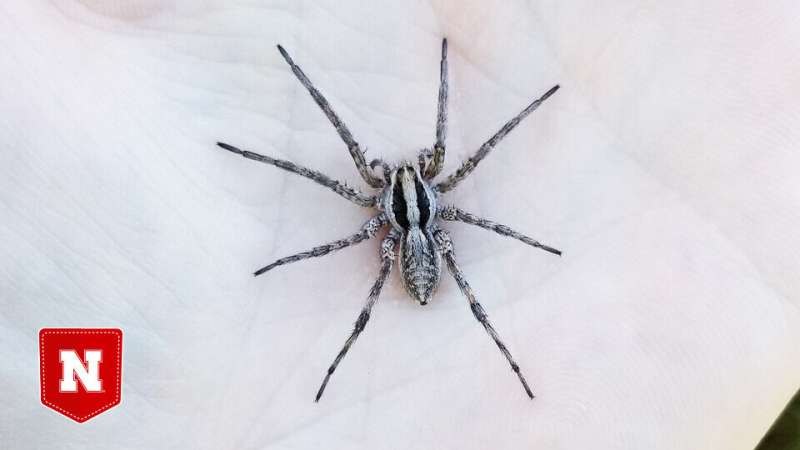Schizocosa saltatrix, a species of wolf spider native to North America. Credit: Stella Uiterwaal
Since the mid-20th century, ecologists have been studying how the availability of prey affects the rate at which predators kill and consume it. Depending on the animals and the ecosystem, predators do tend to consume more prey as more of it becomes available—but often only to a point, beyond which that consumption rate levels off.
With temperatures trending upward across much of the world, ecologists are also keen to understand how global warming might sway the predator-prey dynamics that have emerged over thousands of years. Because rising temperatures speed the metabolism that fuels movement, which in turn drives predator-prey encounters, many ecologists have predicted that prey consumption will increase more-or-less in tandem with temperature. But some recent research suggests that the warming-hunting relationship might have its own threshold, with consumption rates instead peaking and dropping when ecosystems surpass certain temperatures.
Nebraska's John DeLong, Stella Uiterwaal and Alondra Magallanes investigated the issue with the help of Schizocosa saltatrix, a species of wolf spider, and the tiny flies, or midges, commonly eaten by those spiders.
The trio began by collecting 60 wolf spiders and roughly 620 midges from Cedar Point Biological Station, a Husker research site near Ogallala. The team placed each spider inside a petri dish containing between three and 20 midges. Each petri dish sat atop a heating pad set to one of four settings: room temperature (72 to 78 degrees Fahrenheit), low (80 to 85 degrees), medium (86 to 90 degrees) or high (91 to 97 degrees). After 30 minutes, the team counted the number of midges killed and eaten by each spider.
Rather than escalating indefinitely, the wolf spiders' consumption of midges peaked at about 85 degrees Fahrenheit—roughly the highest conceivable temperature that the nocturnal species would be accustomed to hunting in. If that phenomenon holds across other predatory species, global warming could potentially increase foraging among nocturnal predators while curbing it among species that hunt by day, the researchers said.
The current study is published in Climate Change Ecology. More observational studies could help pinpoint which of the many potential causes are responsible for the threshold found in the study, the team said. Understanding how fast consumption does increase alongside warming, and the temperatures at which it peaks in various species, should also allow researchers to better predict the ecological outcomes of climate change.
More information: John P. DeLong et al, Temperature has a unimodal effect on the functional response of wolf spiders, Climate Change Ecology (2022). DOI: 10.1016/j.ecochg.2022.100063
Provided by University of Nebraska-Lincoln
























